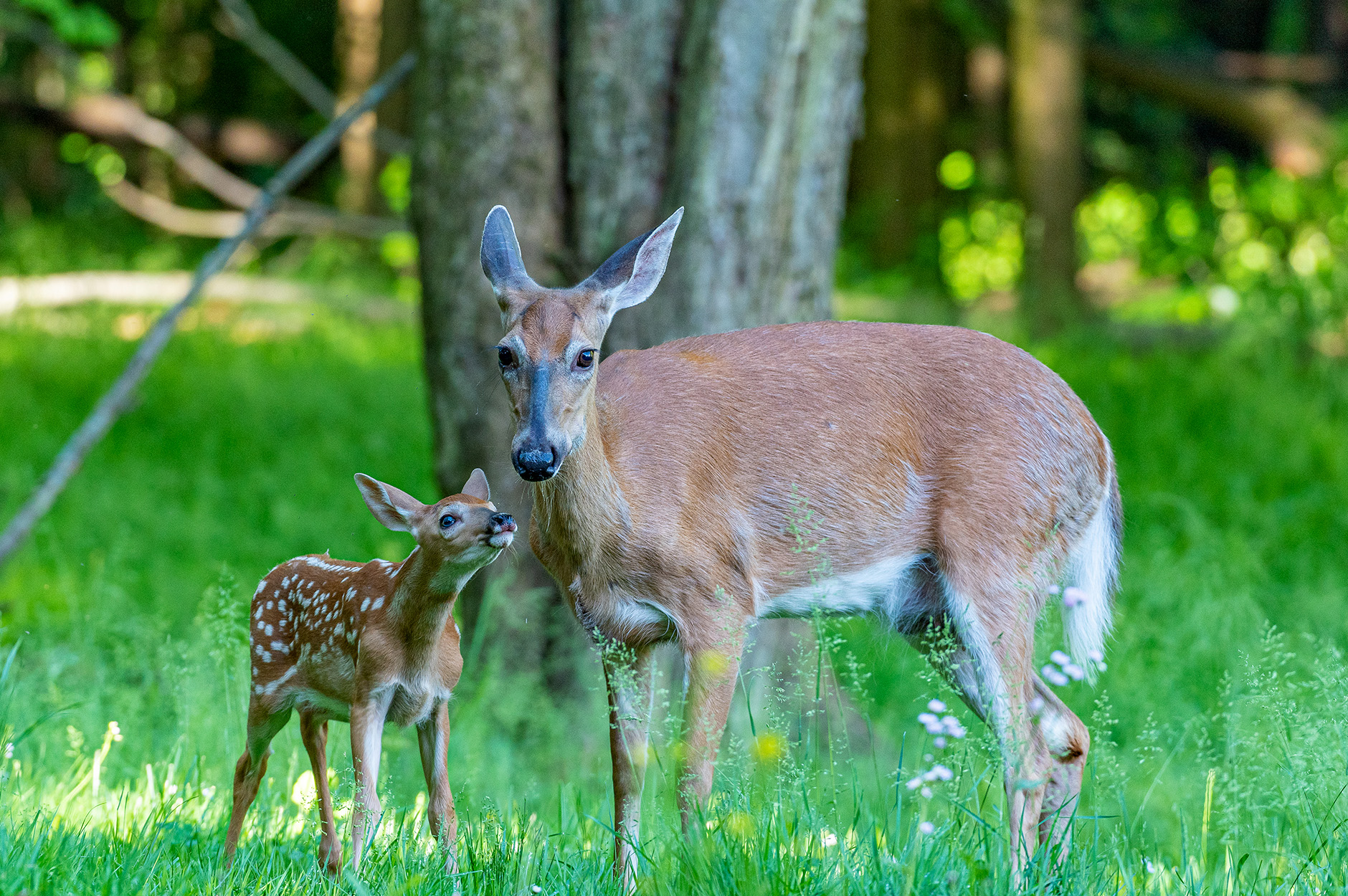Experts studying chronic wasting disease in free-ranging and captive deer populations have historically pointed to animal-to-animal contact as the primary transmission of the disease. They’ve seen how the prions causing CWD can jump from one animal to the next through saliva, blood, feces, and urine, and how those infectious prions can persist in the environment for years. But new research has revealed an even scarier and more insidious place for CWD transmission: the womb.
The study, published in Scientific Reports this month, found that free-ranging whitetail does infected with CWD can pass the disease onto their unborn fawns. (The authors refer to this as “vertical transmission,” as opposed to “horizontal transmission” of live animal to animal contact.) They say it’s the first study that provides evidence of CWD infections being transmitted in utero in wild deer.
“We report the presence of the infectious CWD agent within the pregnancy microenvironment and fetal tissues of free-ranging, naturally exposed white-tailed deer,” the authors write in the study’s introduction. “This demonstrates that CWD can cross the maternal-fetal interface to initiate an active gestational infection.”
This type of vertical transmission has been documented previously in lab settings, the authors point out. Past research on experimental CWD-infected Reeves’ muntjac (a type of deer native to China and Taiwan), for example, found that in-utero transmission of CWD could occur at any stage of gestation or infection. Biologists have also found CWD prions in the reproductive and fetal tissues of free-ranging Rocky Mountain elk and whitetail deer. The bigger, unanswered question was if those tissues were infectious enough for free-ranging whitetail does to pass the disease along to their fetuses during pregnancy.
How Infectious Are Pregnant Does?
To answer it, researchers examined 31 pregnant, free-ranging whitetail does that were harvested from the Southeastern U.S. Three of the deer served as the control group, since they came from an area in north-central Georgia, Clarke County, where CWD has not yet been found. (The state confirmed its first case of CWD in January, but that infected deer was harvested in Lanier County closer to Florida.) The other 28 does came from areas in Arkansas, Tennessee, and West Virginia where CWD prevalence rates are around 20 percent. Of those 28 deer, 16 tested positive for the fatal neurological disease.
And of those 16 CWD-positive does, five (or nearly a third) of them were carrying at least one fetus with tissues that harbored CWD prions. The researchers then inoculated those tissues into lab mice, most of which developed the disease, establishing that the tissues found in the whitetail fetuses were infectious enough to spread CWD.
The research team says the experiment revealed “a more nuanced picture” of CWD transmission during pregnancy. Whitetails often give birth to twins, and the team found that in some cases, one fetus had CWD prions in their tissues while the other didn’t. They likewise found that CWD-positive does with infectious prions in their uterus or other reproductive tissue didn’t automatically pass those prions onto their fetuses. This could suggest the role that genetics play in determining a deer’s susceptibility to CWD, the team points out.
Read Next: Are Chronic Wasting Disease Fears Making People Quit Deer Hunting?
The authors add that more research is needed into the potential effects in-utero CWD transmission is having on reproductive and recruitment rates in the wild. This would be especially helpful in the 36 U.S. states where the disease has already been identified, since free-ranging fawns aren’t typically incorporated into statewide CWD surveillance programs.
“Considering the strong relationship between CWD infection probability and white-tailed deer relatedness,” the authors conclude, “in utero CWD transmission may serve as a small yet important route of transmission in addition to social interactions and indirect exposures.”
Read the full article here





